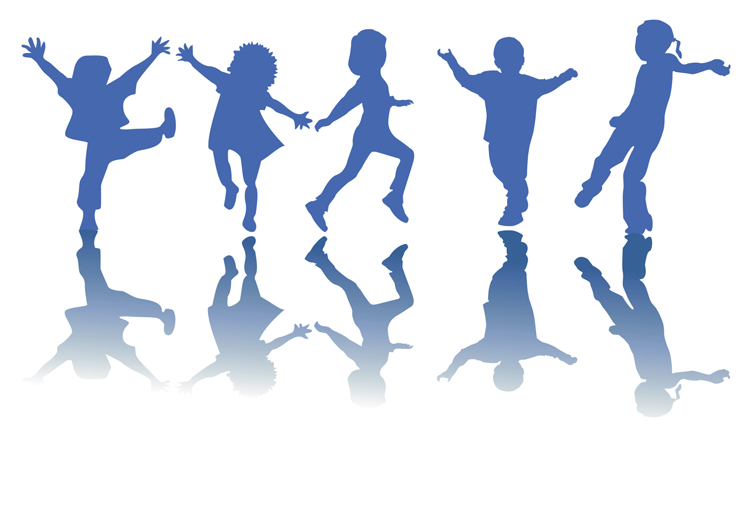Mantra chanting is an ancient way for getting success, healing and prosperity in life. There are many mantras. However some of the most useful mantras are discussed here.
Mantra chanting is easily practiced anywhere, as when repeated mentally, no one can see what we are doing. It is one method for regaining and maintaining peace during stressful times. When we are feeling stress, a few moments of mantra meditation can clear away the dust obstructing the view of a good resolution. And, upon lying down for sleep, mantra repetition can calm the mind, letting the body relax.
A mantra is a syllable or group of syllables – sound vibrations – that clear the mind of debris; much as sound vibrations clean jewelry. When first practicing, the mantra can be spoken, and as we concentrate we can begin mental repetition.
Swami Prabhupada writes in the Srimad Bhagavatam: “Unless one follows the disciplic succession, the mantra one receives will be chanted for no purpose. Nowadays there are so many useless gurus who manufacture their mantras as a process for material advancement, not for spiritual advancement. Still, the mantra cannot be successful if it is manufactured. Mantras and the process of devotional service have special power..”
As with all types of meditation practices the practice itself is not the goal; the goal is a calm mind and relaxed body, so that harmonious thoughts more easily come to mind followed by their product of kind and caring actions.
When our mind is calm and clear we make the best decisions for all concerned. Peace and harmony in our own life influences others’ feelings of peace and harmony. Our positive and kind words and actions bless ourselves, because we feel good in the process of positive thought and action, and the recipients of our goodness benefit by our actions and examples.
When mantra does not work?
A mantra must be received from your Inner Guru. Mantras received from any other type of external gurus, like unrealized head of some spiritual organizations generally does not work. Generally mantra which includes the name of a dead person “incarnations,” does not work. Mantra with too many words does not work.
Real Mantras:
The yoga cum meditation cum spiritual business is flourishing these days. Modern-day “incarnations,”, “messiahs,” with all varieties of mantras, are a dime a dozen, as eager customers flock to the feet of self-styled saviors. The Mundaka Upanisad states that “In order to learn the transcendental science, one must approach the bona fide spiritual master in disciplic succession, who is fixed in the Absolute Truth.”
The Power of Mantra Meditation
The Vedas, scriptures containing the timeless spiritual knowledge of ancient India, state that an awakening process is desperately needed because everyone in this material world is in a sleeping, dreamlike condition. We have forgotten our original, spiritual identity, accepting instead a temporary material body composed of physical elements as our real self. The Vedas compare the material body to the subtle forms we experience in dreams. While sleeping, we forget our normal waking identity and may find ourselves enjoying or suffering in different types of bodies. But when we hear the ringing of the alarm clock, we awaken and return to normal consciousness. We remember who we are and what we should be doing. Similarly, by hearing the powerful transcendental sound vibrations of mantra, we can gradually wake up to our original self, the soul, which is characterized by eternality and is full of knowledge and ever-increasing pleasure.
The sages of ancient India therefore tell us that the goal of human life should not be to try to enjoy our temporary dreamlike situation in the material world. Rather, we are advised to awaken to our original, spiritual nature and ultimately return to our true home in the spiritual world, where we may enjoy an eternal relationship with the Supreme God.
The transcendental potency necessary for developing complete psychological and spiritual fulfillment is already present within everyone. It must, however, be uncovered by a genuine spiritual process.
How to Chant
There are two basic types of chanting. Personal meditation, where one just remember the power of the word, is called mental japa. When one chants in responsive fashion with others, this is called kirtana. Kirtana is usually accompanied by musical instruments and clapping. Both forms of chanting are recommended and beneficial.
There are no hard-and-fast rules for chanting. The most wonderful thing about mantra meditation is that one may chant anywhere — at home, at work, driving in the car, or riding on the bus or subway. And one may chant at any time.
The OM Chant
If there is no religious preference than the sound vibration ‘OM’ is a universally recognized mantra.
If using ‘OM’ draw the sound out like this – oooooommmmmmmmmmm – emphasis being on the last part. To use in conjunction with breathing take an in breath, and then on the out breath repeat ‘OM’ remembering to draw out the ending.
Therefore chanting OM (AUM) will bring us to a state of purity in body mind and soul.
Sri Amit Ray in the Book Om Chanting and Meditation beautifully explained the details of Om meditation and AUM chanting.
AUM
The Purity Chant
The Om is composed of three letters, A, U, and M. These symbolize the practitioner’s impure body, speech, and mind; they also symbolize the pure exalted body, speech, and mind of a Buddha.
All Buddhas are cases of beings who were like ourselves and then in dependence on the path became enlightened; Buddhism does not assert that there is anyone who from the beginning is free from faults and possesses all good qualities. The development of pure body, speech, and mind comes from gradually leaving the impure states arid their being transformed into the pure.
The path is indicated by the next four syllables. Mani, meaning jewel, symbolizes the factors of method-the altruistic intention to become enlightened, compassion, and love. Just as a jewel is capable of removing poverty, so the altruistic mind of enlightenment is capable of removing the poverty, or difficulties, of cyclic existence and of solitary peace. Similarly, just as a jewel fulfils the wishes of sentient beings, so the altruistic intention to become enlightened fulfils the wishes of sentient beings.
The two syllables, padme, meaning lotus, symbolize wisdom. Just as a lotus grows forth from mud but is not sullied by the faults of mud, so wisdom is capable of putting you in a situation of non-contradiction whereas there would be contradiction if you did not have wisdom. There is wisdom realizing impermanence, wisdom realizing that persons are empty, of being self-sufficient or substantially existent, wisdom that realizes the emptiness of duality-that is to say, of difference of entity between subject an object-and wisdom that realizes the emptiness of inherent existence. Though there are many different types of wisdom, the main of all these is the wisdom realizing emptiness.
Purity must be achieved by an indivisible unity of method and wisdom, symbolized by the final syllable hum, which indicates indivisibility. According to the sutra system, this indivisibility of method and wisdom refers to wisdom affected by method and method affected by wisdom. In the mantra, it refers to one consciousness in which there is the full form of both wisdom and method as one un-differentiable entity. In terms of the seed syllables of the five Conqueror Buddhas, hum is the seed syllable of Akshobhya – the immovable, the unfluctuating, that which cannot be disturbed by anything.
Thus the six syllables, om mani padme hum, mean that in dependence on the practice of a path which is an indivisible union of method and wisdom, you can transform your impure body, speech, and mind into the pure exalted body, speech, and mind of a Buddha. It is said that you should not seek for Buddhahood outside of yourself; the substances for the achievement of Buddhahood are within. We have within us the seed of purity, the essence of a One, that is to be transformed and fully developed into Buddhahood.
om mani padme hum
The Gayatri Mantra
The meaning of the Gayatri mantra is as follows
We contemplate the glory of Light illuminating the three worlds: gross, subtle, and causal.
I am that vivifying power, love, radiant illumination, and divine grace of universal intelligence.
We pray for the divine light to illumine our minds.
Om: The primeval sound
Bhur: the physical world
Bhuvah: the mental world
Suvah: the celestial, spiritual world
Thath: That; God; transcendental Paramatma
Savithur: the Sun, Creator, Preserver
Varenyam: most adorable, enchanting
Bhargo: luster, effulgence
Devasya: resplendent,supreme Lord
Dheemahi: we meditate upon
Dhiyo: the intellect,understanding
Yo: May this light
Nah: our
Prachodayath: enlighten,guide,inspire
Om Bhur Buvaha Suvaha
Thath Savithur Varenyam
Bhargo Devasya Dheemahi
Dhiyo Yonaha Prachodayath
Maha Mrityunjaya Mantra Chant:
Anybody can recite this mantra and attain good health, release from mental bondage from ideologies and other problems.
OM TRYAMBAKAM YAJAMAHE
SUGANDHIM PUSHTHI VARDHANAM
URVARUKAMIVA BANDHANAT
MRYTYOR MUKSHEEYA MAMRITAT ||
Tryambaka is the name of Lord Shiva as the father of the three worlds – bhu, bhuva and svarga lokas.
Meaning: We remember the Three-Eyed Lord Shiva who is naturally fragrant, immensely merciful and who is the Protector of the devotees. Remembering the name may we be liberated from death for the sake of immortality just as the ripe cucumber easily separates itself from the binding stalk i.e. “By your Grace, Let me be in the state of salvation (Moksha) and be saved from the clutches of death and sorrowness”. Remembering Lord Ganesha and then Brahmrishi Vasishta who has given us this mahamantra.
It brings health, wealth, peace, prosperity, satisfaction and long life. It is a Moksha-Mantra too.
The Hare Krishna Mantra
Hare Krishna, Hare Krishna
Krishna Krishna, Hare Hare
Hare Rama, Hare Rama,
Rama Rama, Hare Hare
The HU Chant
Chanting HU (pronounced “hue”) aloud or to yourself can open your heart to God’s love and transform your life. This daily practice can help you experience more love, joy and spiritual freedom. You can also try chanting this inwardly when faced with challenging situations. HU is a ancient name for God and is a very uplifting chant when singing it with a group of people.
HU (hue)
Mantra for success, mantra for healing and mantra for peace is the ancient way for happy life.
 Follow
Follow

